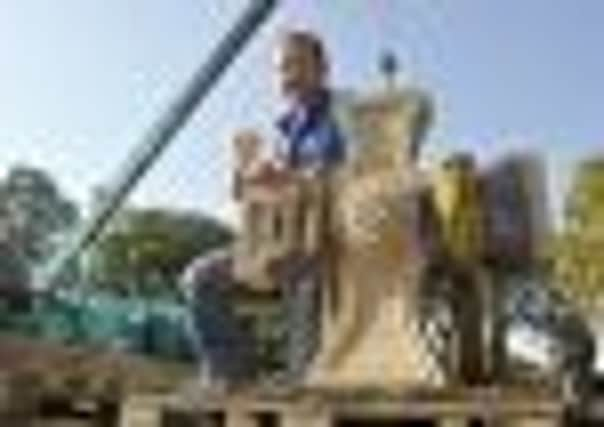Village gets its Pictish cross back after 1500-year break


The four-and-a-half metre monument, crafted from Clashach sandstone, was mounted in the grounds of Aberlady Parish Church in East Lothian.
Costing around £50,000 and taking two years to complete, the intricate stone masterpiece is the handiwork of renowned sculptor Barry Grove, who was commissioned by a local heritage group to reconstruct the Pictish cross inspired by a fragment of the shattered original monument found in the Victorian era.
Advertisement
Hide AdAdvertisement
Hide AdThe 60cm remnant is now on display at the National Museum of Scotland.


Mr Grove began studying the artwork and culture of the ancient Scots in the 1980s while attending the Duncan of Jordanstone College of Art and Design in Dundee. He has now had more than three dozen Pictish stones commissioned – the most cumbersome piece taking four years to complete.
The Aberlady cross was carved after study of the original relic but is more of a reconstruction than a replica, said Mr Grove.
“It’s an idea of what it may have looked like when it was first carved,” he said. “I have become intimately involved and today was the first time I have seen it vertical as it’s been laying horizontally. It’s all carved by hand with mallet and chisel the same way it would have been done 1500 years ago – that technique hasn’t changed over time.”
Advertisement
Hide AdAdvertisement
Hide AdIn keeping with the authentic approach, humans and beasts carved into the stone have been set with glass eyes which, it is thought, was a common practice among Anglo-Saxon stonemasons.
Asked what purpose the stones served in ancient Scotland, Mr Grove said: “They would have been a focus of devotion. The Christians were trying to Christianise the Picts at this point.
“You have what we would call pagan imagery mixed in with a sort of high Christian cross so they are just trying to introduce and make Christianity the dominant religious belief. Before the building of churches this would have been the focal point of devotion.”
The original cross may have perished in the weather, toppled over or been demolished during the Reformation as an idolatrous symbol of Catholicism.
Advertisement
Hide AdAdvertisement
Hide Ad“It was quite common for any carved work to be reused in lintels on buildings built into walls,” added Mr Grove.
“This is a new piece of public art based on an ancient fragment.
Ian Malcolm, secretary of Aberlady Conservation and History Society, which commissioned the work with funding from East Lothian Council and Tyne Esk Leader said: “It’s great to see it back in the village again after all this time.”
david.mccann@edinburghnews.com